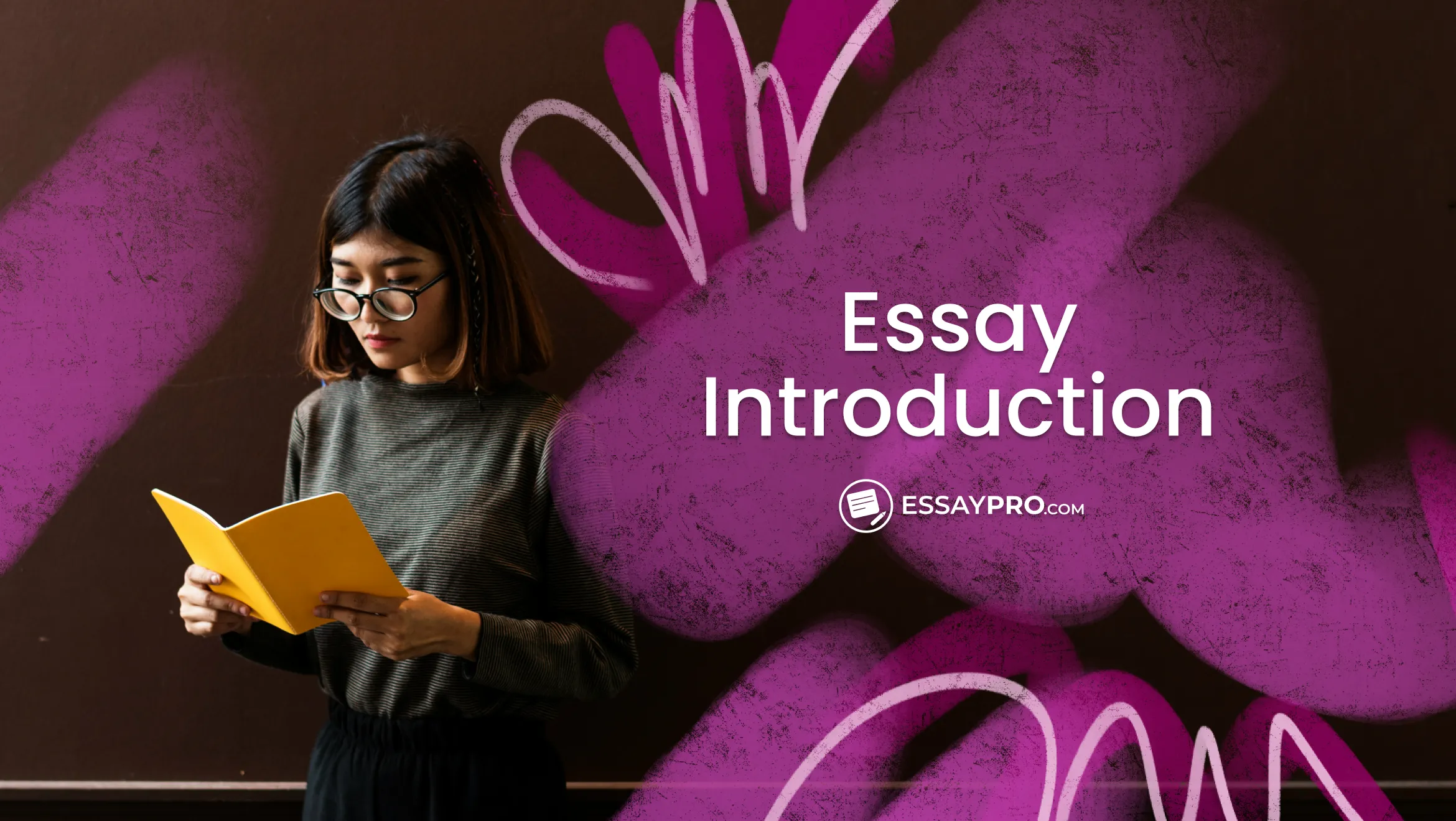Writing a response paper is an important task for students. It allows them to critically analyze a text, express their thoughts and opinions, and improve their writing skills. In this comprehensive guide, our experts will explore the basics of how to write a response paper, pre-writing steps, and crafting a winning introduction, body, and conclusion. So, let's dive in and discover a flawless response paper at the end!
Defining What is a Response Paper
A response paper is a written assignment that requires the student to read a text and respond to it by expressing their views on the topic. It can be a stand-alone assignment or part of a larger project. When writing a response paper, it is important to remember the audience you are writing for. Are you writing for your professor, classmates, or a broader audience? This will help you tailor your writing style and tone accordingly.
Moreover, this kind of academic assignment should not only summarize the text but also provide a critical analysis of its main arguments and ideas. It should demonstrate your understanding of the text and your ability to engage with it in a thoughtful and meaningful way.
Purpose of Crafting a Response Paper
Writing response papers aims to demonstrate your understanding of the text, give your opinions and thoughts, and provide evidence to support your claims. In addition, this type of paper can help you develop critical reading skills and formulate coherent arguments. By engaging with the text, you can identify its strengths and weaknesses, evaluate its claims, and form your own opinions about the topic.
Furthermore, crafting response paper examples can be a valuable exercise in self-reflection. It allows you to articulate your thoughts and feelings about a particular topic and can help you better understand your values and beliefs.
Types of Response Papers
There are various types of response papers, each with its own unique characteristics and requirements. These include:

- Personal response: Here, you express your personal opinions, thoughts, and emotions about the text. This type of paper allows you to engage with the text more personally and explore your reactions to it.
- Critical response: Involves analyzing, evaluating, and interpreting the text to provide a critique. This type of paper requires you to engage with the text more objectively and analytically, focusing on its strengths and weaknesses and providing evidence to support your claims.
- Research-based response: Research-based response paper examples involve using external sources to support your claims. This type of paper requires you to engage with the text and supplement your analysis with evidence from other sources, such as scholarly articles, books, or interviews.


How to Write a Response Paper: Pre-Writing Steps
Before diving into the writing process, laying a strong foundation through effective pre-writing steps is crucial. These initial stages not only provide clarity and structure but also enhance the overall quality of your response. And if you aren’t sure how to write a reaction paper, these steps can also be employed for your assignment.

Carefully Read and Analyze the Text
The first step in response paper creation is to carefully read and analyze the text. This involves more than just reading the words on the page; it requires critical thinking and analysis. As you read, pay attention to the author's tone, style, and use of language. Highlight important points, take notes, and identify the author's main argument and themes. Consider the context in which the text was written and how it relates to contemporary issues.
For example, if you are reading a historical document, think about how it reflects the social and political climate of the time. If you are reading a work of fiction, consider how the characters and plot relate to larger themes and ideas. By carefully analyzing the text, you will be better equipped to write a thoughtful and insightful response.
Take Notes and Highlight Key Points
Another important step is to take notes while reading, as it helps you organize your thoughts and ideas. As you read through the text, jot down your reactions, questions, and observations. Highlight key points, evidence, and quotes that support the author's argument. This will make it easier to refer back to specific parts of the text when you are writing your response.
Additionally, taking notes can help you identify patterns and connections between different parts of the text. This can be especially helpful when you are trying to develop your thesis statement and outline.
Develop a Thesis Statement
A thesis statement is a central argument that you will be making in your paper. It should be clear and concise and provide direction for your essay. Your thesis statement should be based on your analysis of the text and should reflect your own perspective.
When developing your thesis statement, consider the main argument of the text and how you agree or disagree with it. Think about the evidence and examples that the author uses to support their argument and how you might use those same examples to support your own argument. Your thesis statement should be specific and focused and should guide the rest of your essay.
Create an Outline
If you want to unlock the most important tip on how to ace a response paper perfection, it lies in creating a well-organized outline. Identify key points, evidence, and arguments that you want to discuss and organize them into a well-written paper format. Your outline should include an introduction, body paragraphs, and a conclusion.
Start by introducing the text and your thesis statement. In the body paragraphs, discuss your main points and provide evidence from the text to support your argument. Use quotes and examples to illustrate your points. In conclusion, summarize your main points and restate your thesis statement. In the following paragraphs, we'll delve deeper into writing each section with more details.
Actual Writing Process with a Response Paper Format
Now that you have completed the essential pre-writing steps, it's time to delve into the actual writing process of your paper. In this section of our comprehensive guide, we will explore how to start a response paper along with developing insightful body paragraphs and culminating in a powerful conclusion.
Engage the Reader In Your Introduction
The introduction is the first impression that your reader will have of your paper. It is important to make a good first impression, so you want to engage them right from the start. There are several ways to do this, such as providing context, using a hook, or starting with a rhetorical question.
For example, if you are writing a paper about the effects of social media on mental health, you might start with a hook like:
'Did you know that the average person spends over two hours a day on social media? That's more time than they spend exercising or socializing in person.'
When working with your paper, this hook immediately grabs the reader's attention and makes them interested in learning more about your topic.
Provide Context and Background Information
Once you have engaged the reader, it's important to provide context for the text you are analyzing. This includes information like the author's name, the title of the work, and the publication date. This information helps the reader understand the context of the text and why it is important.
For example, if you are analyzing a poem by Maya Angelou, you would want to provide some background information about her life and work. You might mention that she was a civil rights activist and a prolific writer and that the poem you are analyzing was written in 1969, during a time of great social and political upheaval in the United States.
Present Your Thesis Statement
Finally, it's important to present your thesis statement in the introduction. The thesis statement is the main argument of your paper, and it should be presented clearly and concisely so that the reader knows exactly what your paper is about.
For instance, if you are crafting a response paper example about the effects of social media on mental health, your thesis statement might be something like:
'This paper argues that excessive use of social media can have negative effects on mental health, including increased anxiety, depression, and feelings of isolation.'
By presenting your thesis statement in the introduction, you are setting up the rest of your paper and giving the reader a roadmap for what to expect. This helps them stay focused and engaged throughout your paper.
Meanwhile, you can find out more about how to write an essay format and set the right referencing style for your assignment!
Crafting the Body
One key aspect of ensuring a well-structured and articulate paper is to utilize your typical response paper outline as a reliable roadmap. By following it, you can maintain focus, coherence, and logical flow throughout your response. Moreover, keep the following points in mind as you proceed with crafting the body of your response paper:
- Use evidence and examples from the text:
- Incorporate relevant quotes, statistics, or other evidence that supports your opinions and arguments.
- By using evidence from the text, you can strengthen your argument and demonstrate a deep understanding of the material.
- Analyze and interpret the text:
- Demonstrate your critical thinking skills by thoroughly analyzing and interpreting the text.
- Explain how the text relates to your thesis statement and overall argument.
- Provide a clear and concise response that showcases your knowledge and understanding of the material.
- Address counterarguments and alternative perspectives:
- Acknowledge and address opposing viewpoints to demonstrate your ability to consider different perspectives.
- Explain why your argument is stronger than the opposing viewpoint.
- Provide evidence to support your claim and solidify your stance.
Concluding Your Paper
In the conclusion of your response paper example, it is essential to consolidate your reactions, ideas, and arguments regarding the text. Summarize the key points discussed throughout your paper, drawing inferences whenever applicable.
When uncertain about how to write a conclusion for a research paper, the first important rule is to refrain from introducing new ideas or reiterating information already presented in the introduction of your paper. Instead, provide a concise and coherent summary that encapsulates the essence of your response, leaving a lasting impression on the reader.
Response Paper Example
To show you how to write a response paper effectively, our writer has provided an amazing example below. It will inspire you and help you on your own learning journey. Get ready to explore new ideas and expand your knowledge with our response paper sample.
To Wrap Up
As we conclude this comprehensive guide on how to write a response paper, you have acquired the essential tools and knowledge to embark on your writing journey with confidence. With a firm grasp of pre-writing strategies, the art of crafting an engaging introduction, organizing a well-structured body, and understanding the significance of supporting arguments and addressing counter arguments with a good response paper example, you are poised to leave a lasting impression.
And if you ever find yourself struggling to find inspiration or facing challenges with any aspect of your essays, order essay online and take advantage of the opportunity to seek assistance from our professional writing service team. By trusting us with your college essays and ordering a response paper, you can confidently navigate your academic journey!
Take the Stress Out of Writing Response Essays!
Our expert writers are ready to craft a tailored, insightful response essay example that meets your requirements.

Daniel Parker
is a seasoned educational writer focusing on scholarship guidance, research papers, and various forms of academic essays including reflective and narrative essays. His expertise also extends to detailed case studies. A scholar with a background in English Literature and Education, Daniel’s work on EssayPro blog aims to support students in achieving academic excellence and securing scholarships. His hobbies include reading classic literature and participating in academic forums.






